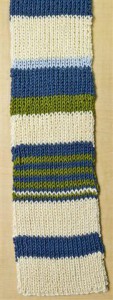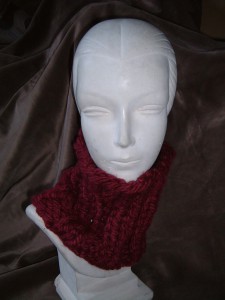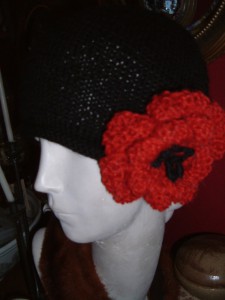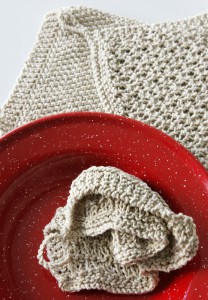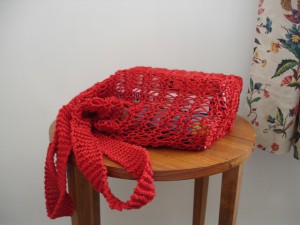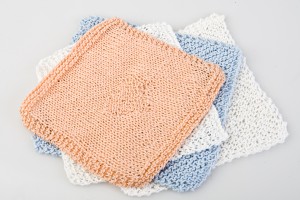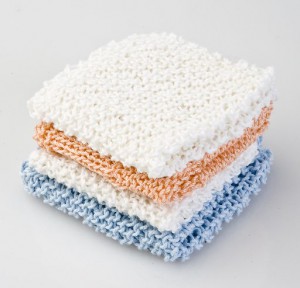Welcome to my world
As a child, I knitted doll’s dresses for pocket money. In my teens, in the sixties, I was hip to the beat with self-knitted big ‘Sloppy Joe’ sweaters, worn with tights of off-beat colours and winkle-pickers, followed by years of practical family knitting. But, after years of not casting on due to life getting in the way, I had lost the knack of knitting.
I wasn’t satisfied with the results of my renewed effort, it was a bit hit and miss…. That is, until I got serious about knitting tension swatches and checking my gauge before beginning the next project. I used to consider swatches a waste of time and wool. I’d do them now and then, but didn’t learn how liberating those little bits of stitches could be. Oh, how foolish I was.
Most pattern books tell you to knit a tension square or swatch and carefully check your gauge before starting the garment. (The tension refers to your individual knitting style – are you a loose knitter, or a tight knitter? The gauge is a device for checking your tension. The swatch reveals all.) I used to get part way through a swatch, get bored, check a few lines and rip into the real knitting. Sticking pins in a wee bit of cloth seemed like too much trouble – close enough was good enough. I really didn’t get it and it took me years of knitting wearable, but slightly disappointing (for my picky fashion sense) garments, for the penny to drop. Those jerseys from my teenage years kept raising their sleeves in protest.
The swatches have released the frustration of knitting. Now, when I know what I have in my mind’s eye will work out as I intend it to, and not result in some misshapen dishcloth, I can knit to my heart’s content, guiltless of time and wool costs.
The swatches have also taken me away from pattern books to designing my own garments. Now I can play with my knitting, designing on the go, either by pre-drawing my own pattern or making it up as I knit. Being clear-headed about how big or small something will be, what will happen if I decrease, increase, or change needles midstream, and shaping garments to fit my imagination has unlocked exciting potential. It has become more playful, more creative and enjoyable.
If you take only one tip from me, it is fall in love with tension swatches and checking your knitting gauge. Always knit your tension swatch before you start your project. It will save many a headache later.
To make a useful tool to check your gauge:
Take a piece of cardboard or firm plastic approximately 15X15 cm.
Draw a 10X10cm square central to the above square. Accuracy is critical for future success. Cut out the 10X10cm square, preferably with a craft knife (It will give a cleaner cut than scissors).
In future when you knit a swatch, cast on at least four stitches extra and knit at least four rows more than recommended. This will allow for the edge curl that forms on knitting and make it easier for you to count stitches and rows. Let the swatch ’rest’ for at least a couple of hours before you measure it as wool relaxes after knitting. Sounds weird, but bear with me, it does make a difference.
Now place the tool to check your gauge central to the swatch, stick a pin through the knitting at each corner and start counting. When a garment requires 20 stitches per 10cm, be sure it is 20 stitches, not 19 or 21. Even half a stitch can make a difference over a large piece of knitted cloth. When 20 stitches equals 10cm, 40 stitches will equal 20cm, and so on. Now you can make pieces to your own measurements.
When you count the number or rows knitted per 10cm you will know how many rows you will need to knit for the length of the garment.
The number of stitches is crucial to sizing while the number of rows is less so. A row more or less will not be a disaster, you can always knit another row or unravel a row of stiches, but too many or too few stitches will cause you to tear your hair out as you spend frustrating hours knitting and unravelling wool. Attention to detail early on makes for an enjoyable pastime.
A swatch may be irritating to do, but remember – small irritations can make pearls or lame ducks. Give me pearls any day.
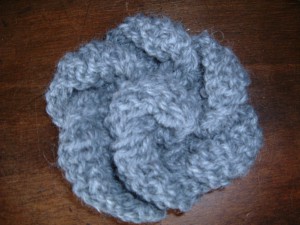 A touch of handmade style:
A touch of handmade style:
Flower pattern:
Cast on 40 stitches.
Knit 10 rows.
Row 11: *Knit 5, hold the right hand needle still, twist the left hand needle toward you and rotate 360 degrees. Continue from * to the end of the row.
Row 12: *Purl 2together. Continue from * to the end of the row. You will now have 20 stitches on your needles.
Row 13: * Knit two together. Continue from * to the end of the row. You will now have 10 stitches on your needles.
Row 14: *Purl 2together. Continue from * to the end of the row. You will now have 5 stitches on your needles.
Row 15: Slip first stitch over second then slide first stitch off needle, second over third and slide second stitch off needle, third over fourth and slide third stitch off needle, fourth over fifth, slide fourth stitch off needle then tie off the last stitch by slipping the thread through the loop. Twist into a flower shape and stitch in place. Add a brooch pin to the back of the flower.
Now play with the pattern and make it your own. Design your own flower. If you want to make a smaller, more delicate flower, use fine or embroidery wool (you will find a wide range of wonderful colours available), knitting cotton or silk and smaller needles. For a larger flower, experiment with big wool and big needles.
Try more stitches, fewer stitches.
Remember that you need to turn your needle to make the petals so when you cast on, decide how many petals you want and cast on multiples of stitches times the number of petals you want your flower to have. In other words if you want seven petals and seven stitches equal a petal you will need 49 stitches; nine petals of seven stitches will need 63 stitches. You don’t even have to stick with seven stitches per petal, you can make small tight petals (use fewer stitches) or big floppy petals (use more stitches).
When it comes to the cast off stage and you have an uneven number of stitches, just relax, and on one of the decreases, knit or purl three stitches together.
Remember, we want a challenge, some fun and creativity. Be gentle with yourself, humans need to create so be a little playful.
MBW
